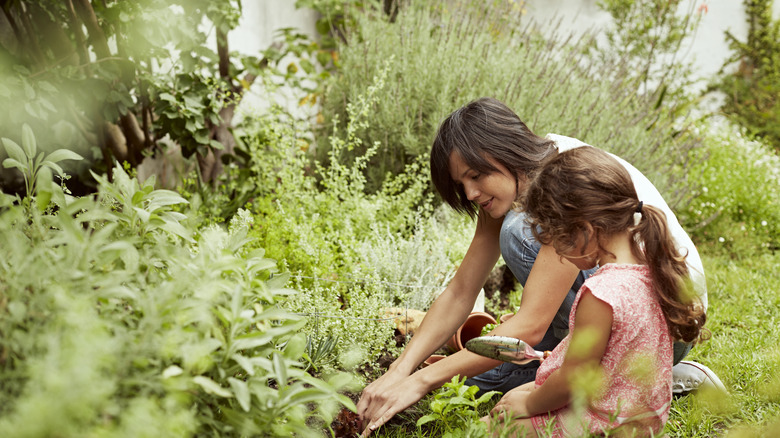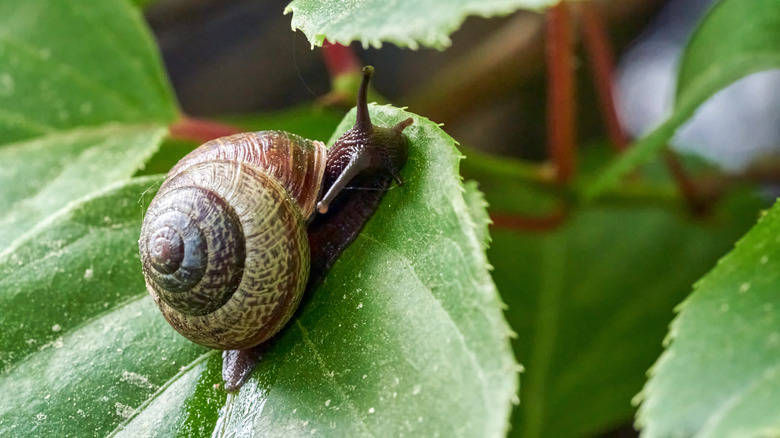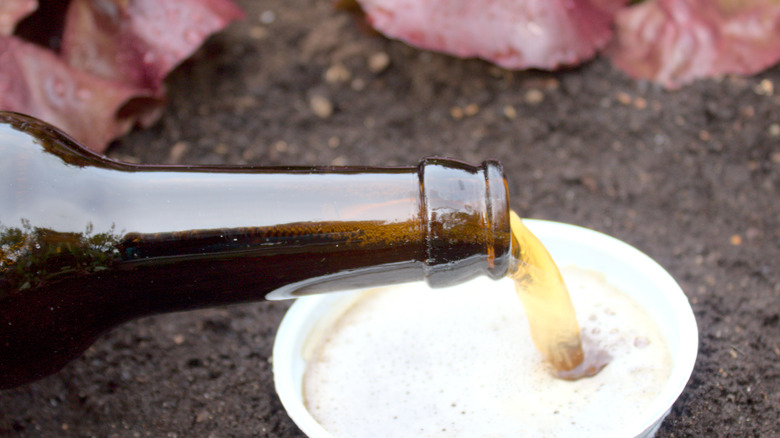One Gardening Task You Really Can't Skip After A Heavy Rain
After a long spell of hot, dry weather, a refreshing rain shower can bring a garden to life. The flowers are brighter and the leaves are greener, and everything seems to be revived. It's not just your plants that spring to life after a good rainfall, however. When the ground is wet and the leaves are covered in raindrops, a few garden pests seem to come to life as well. A gardener knows that after every rain, snails and slugs seem to appear from nowhere and descend on the tender leaves of your garden plants. Revived by the new source of hydration, these small intruders are excited to feast upon the greenery you've so carefully cultivated. After a heavy rain, it's absolutely essential to remove these tiny visitors so that your garden has a chance to flourish. You can tackle this task with a pair of gloves and a bucket, but you can also set up deterrents to keep them from returning.
Because these pests are nocturnal, they can make some progress at night before you awaken to find your precious plants chewed up by slimy slugs. They enjoy any greenery that is high in moisture, such as zinnias, petunias, succulents, and one of their favorites, hosta plants. They also appreciate a fruit and vegetable garden. If you decide to remove them by hand, pull them off the plants and drop them into a pail of soapy water.
Discourage them from coming into your garden
While plucking snails off your plants is the most direct way of getting rid of them, it is also time consuming and impractical on busy mornings. There are a number of ways to discourage them from invading your garden that can also be practical and successful. One natural way to prevent a snail and slug invasion is to fill your flower beds with plants that they don't care for, either due to the smell or the texture. Fragrant herbs such as sage and rosemary will be unattractive to them, and garlic and chives have been known to keep them away as well. Growing these types of plants throughout your garden is one way to protect all of the others from being eaten.
Snails are designed to slip and slide through your garden by producing little trails of mucous, and they don't care for rough surfaces. Diatomaceous earth is a good deterrent because snails don't like its abrasive texture. Plants with spiny or coarse foliage will repel them as well. Many gardeners have had luck with placing ground eggshells or seashells along the base of their plants to create this same unpleasant texture.
Create a beer trap
Be careful about using chemical baits to trap snails because they often contain metaldehyde, which can be poisonous for pets or anyone else who might discover them in the garden. Instead, try attracting snails and slugs with something else that they find irresistible -– beer. These tiny mollusks love the smell of the yeast in dark beer, and even more so once it has fermented for a couple of days. Pour the beer into several shallow containers and set them around the garden in various spots. This method can also be used by combining yeast with some sugar and water. Once the snails have gathered for a drink, you can take them away.
Because snails and slugs like to hide under cool rocks, branches, and leaves to escape the heat, you can also trap them by creating a snail refuge. Scatter a few citrus rinds throughout the garden to provide them with a cool place to hide that has the shade they need. Then dispose of these rinds periodically, along with the slugs. Another way to tempt them away from your main garden is by planting marigolds along the border of the flower bed. They will focus their attention on these plants and you can get rid of them before they venture any further. By focusing on this task of removing snails and slugs from your garden, your plants will benefit and continue to flourish.


